| Most powerful option | Budget Friendly option | Most Exclusive option |
|---|---|---|
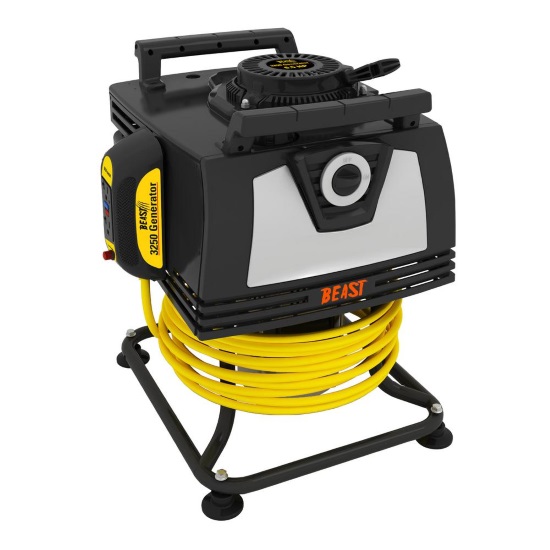
|
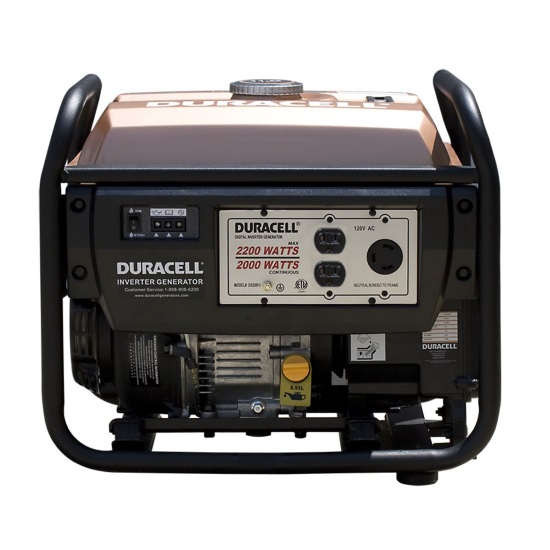
|
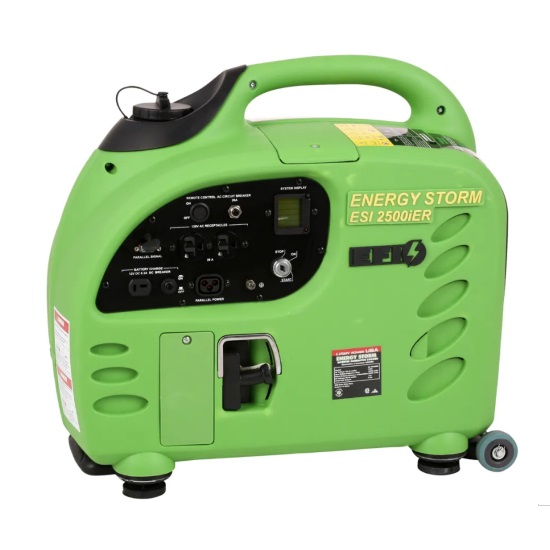
|
| BEAST G3250BM18 | DURACELL DS20R1i | LIFAN ESI2500iER-EFI |
| 2250 Running Watts | 2000 Running Watts | 2400 Running Watts |
| 3250 Starting Watts | 2200 Starting Watts | 2500 Starting Watts |
| Runs on Gasoline | Runs on Gasoline | Runs on Gasoline |
| Recoil pull start | Recoil pull start | Electric start (recoil backup) |
| 120 AC Voltage | 120 AC Voltage | 120 AC Voltage |
| No DC Voltage | No DC Voltage | 12 DC Voltage |
| Runs 2.5 hours at 50% load | Runs 11 hours at 50% load | Runs 14 hours at 50% load |
| 66 dBA at 25% load | 62 dBA at 25% load | 58 dBA at 25% load |
| 71.5 lb (32.4 kg) weight | 59.5 lb (26.9 kg) weight | 72.6 lb (32.9 kg) weight |
| Check price | Check price | Check price |
How we chose the best
Our Generatorist team went over 700 different portable generators to identify 20 machines providing between 2000 – 2400 running watts that we have analyzed down to the smallest details. Out of those, we consider the following options to be the best.
the Most powerful option
| PREFERRED FEATURES | |||
|---|---|---|---|
| Electric Start: | No | Dual Fuel: | No (Gasoline Only) |
| Recoil Backup Start: | Yes | Fuel Gauge: | Info Not Available |
| Inverter: | No | Metal Fuel Tank: | Info Not Available |
| Idle Control: | Info Not Available | Electric Fuel Injection: | No |
| Battery Included: | Info Not Available | Fuel Shutoff Valve: | Info Not Available |
| Low Oil Shutoff: | Info Not Available | Spark Arrestor: | Info Not Available |
why we chose this machine
If you are looking for a 2000 – 2400 generator that provides the most starting power, then Beast G3250BM18 is the way to go. This machine is equipped with a Stanley OEM branded four stroke engine (173cc displacement) that provides up to 3250 starting watts.
Despite its power potential, this machine is still one of those machines that run silently (it makes only 66 dBA noise). Although it has a small gas tank (only 0.4 gal. max capacity), this machine is able to run for solid 2.5 hours at 50% load.
There is only one type of electric outlet available:
- 120 VAC (5-20R DUPLEX) with 20 amp
Also, this machine offers only a manual recoil pull start.
With regards to portability, the Beast G3250BM18 has compact size and is lightweight so it’s easy to move around. You can spend extra money and get a portability kit for this unit as well but it isn’t necessary.
Points to consider
We were surprised by the fact that there is an incredible lack of publicly available information about even the basic features of this generator. The only reason why we have decided to put this unit on this list is the fact that it provides the most starting (surge) watts among 2000 generators.
The Beast G3250BM18 is not expensive. However, there is lack of publicly available information about it. That is why we can recommend this generator only for those, who need a lot of power while camping.
Another thing we didn’t like is the fact that outlets are not covered and a portability kit is not included in the price of this generator.
You don’t like the Beast G3250BM18 machine? Luckily, there are powerful alternatives to this generator (see products below) that provide almost as many starting watts as the Beast. Not only that, there is a lot of publicly available information about these machines and both offer a great value-vs-price ratio.
Don´t forget to take a look at feedback of Home Depot customers. Focus on those classified as “verified purchase”.
Alternative options
The Best Budget friendly option
| PREFERRED FEATURES | |||
|---|---|---|---|
| Electric Start: | No | Dual Fuel: | No (Gasoline Only) |
| Recoil Backup Start: | Yes | Fuel Gauge: | Yes |
| Inverter: | Yes | Metal Fuel Tank: | Yes |
| Idle Control: | Yes | Electric Fuel Injection: | No |
| Battery Included: | No | Fuel Shutoff Valve: | Yes |
| Low Oil Shutoff: | Yes | Spark Arrestor: | Yes |
why we chose this machine
Are you looking for a 2000 watt generator but have a tight budget? Don’t worry as we have looked all over the market to find a perfect generator for your needs – the Duracell DS20R1i.
This gasoline powered generator is an inverter generator that comes equipped with an OHV, 4-stroke, 135cc Duracell OEM branded engine that produces 2000 running and 2200 starting watts. It is protected by an automatic low-oil shutdown and produces clean power with total harmonic distortion of 3% or less.
This unit is relatively silent (just 62 dBA) and is able to run for 7 hours at full load (11 hours at 50% load) thanks to a 2.64 gallon (10 l) metallic gas tank and an automatic idle control.
There are two types of electric outlets available:
- One 120 VAC (5-20R DUPLEX) with 20 amps
- One 120 VAC (L5-30R Twist Lock) with 30 amps
The Duracell DS20R1i doesn’t include any battery so you will be able to start it only with its manual recoil pull start.
Thanks to its dry weight of only 59.5 pounds (almost 27 kg), this unit is easy to move around.
Points to consider
We love the fact, that Duracell DS20R1i is an inverter equipped with a muffler, spark arrester, fuel gauge, and a manual fuel valve.
What we are not happy about are outlets that are not covered. This way, dirt and dust could clog them pretty easily. Although this generator is not that heavy, we would love to see a set of wheels and folding handles.
Also, it seems that the production of this unit has been already discontinued by the manufacturer so spare replacement parts may be hard to get.
If you can’t or don’t want to get the Duracell DS20R1i for whatever reason, we have listed a couple of alternative 2000 watt generators that still provide a lot of features for a relatively small price.
Don´t forget to take a look at feedback and reviews of Amazon customers. Focus on those classified as “verified purchase”.
Alternative options
The Most exclusive option
| PREFERRED FEATURES | |||
|---|---|---|---|
| Electric Start: | Yes (With Remote) | Dual Fuel: | No (Gasoline Only) |
| Recoil Backup Start: | Yes | Fuel Gauge: | Yes |
| Inverter: | Yes | Metal Fuel Tank: | Yes |
| Idle Control: | Yes (Eco Throttle) | Electric Fuel Injection: | Yes |
| Battery Included: | Yes | Fuel Shutoff Valve: | Yes |
| Low Oil Shutoff: | Yes | Spark Arrestor: | Yes |
why we chose this machine
The Lifan Energy Storm ESI2500iER-EFI is the best 2000 watt generator we had the opportunity to look at. This unit is equipped with a gasoline-powered, OHV, 4-stroke, 125cc, FME (Fairbanks Morse) engine that is able to produce 2400 running and 2500 starting watts.
It also comes with an automatic low-oil shutdown protection.
The Lifan ESI2500iER is an inverter generator that produces incredibly clean power with just a 2% (or less) total harmonic distortion. As other inverters, this machine is incredibly quiet (just 58 dBA).
Thanks to an electronic fuel injection system, auto idle control, and 1.5 gallon metallic fuel tank, this machine is able to run for 14 hours at a 50% load.
There are only two types of electric outlets available:
- One 120 VAC (5-20R DUPLEX) with 20 amps
- One 12 VDC with 8.3 amps
This generator is equipped with a battery that provides for a comfortable electric start with a remote controller. The best part? Manufacturers have decided to keep the manual recoil pull start as a backup option.
With regards to portability, the Lifan is easy to move around thanks to its low dry weight (just 72.6 pounds / 33 kg) and included set of wheels.
Points to consider
We love the fact that this unit is an parallel-ready, inverter generator that is not that expensive. Except for features mentioned above, ESI2500iER-EFI model comes equipped with a manual fuel shut-off valve, fuel gauge, spark arrestor, and a muffler.
What we don’t like is the fact that its outlets are not covered.
If you can’t get the Lifan ESI2500iER-EFI for whatever reason (it may be out of stock or out of your budget), then we have listed other exclusive 2000 generators that still provide a lot of extra features.
Don´t forget to take a look at feedback of Home Depot customers. Focus on those classified as “verified purchase”.
Alternative options
Shopping guide to
Lots of people purchase generators only after they are left without power. This puts them under pressure and they often make a hasty decision that leaves them with a costly machine that doesn’t fit their needs.
Backup generators for your household appliances can become quite an overpriced investment, especially if you have absolutely no idea what you really need to look for.
Luckily, thanks to our shopping guide you are going to make a much more informed shopping decision. If you want to get the best 2000 watt generator possible, you need to consider the following:
- Your power requirements – In this article we are choosing from machines that all provide between 2000 – 2450 running watts. However, the number of starting watts may change significantly so you need to consider your real needs.
- Your budget – The second most important thing you need to consider is your budget. Actually, in most cases this is the most limiting factor you will encounter while choosing your machine.
- Portability – Do you plan to move your machine around? Then go for brands and models that offer lower dry weight, a wheel kit, and a folding handle.
Once you have defined these major limiting factors, you can filter out a vast majority of machines. If there are still too many options for you to choose from, then you need to have a look at these extra features and decide, which are a must have for you:
- Inverter – Inverter generators provide cleaner and much more reliable power as they do output AC current that is then converted into DC voltage and then again re-inverted back into a clean AC voltage. Except for clean current that doesn’t damage softer electronic appliances such as computers and laptops, these machines are quieter and more fuel efficient.
- Noise – If noise is your main concern, then choose an inverter generator. Conventional machines can be quiet as well but even if they include an effective muffler, in most cases they don’t reach as low levels of noise as inverters do.
- Automatic Voltage Regulation – The AVR is an electronic device (usually a capacitor) that automatically maintains output terminal voltage of your generator at a set value no matter the load or operating temperatures. Some sensitive electronic appliances could get damaged if the voltage gets out of certain range.
- Automatic Idle Control – The automatic idle control (also known as Eco Throttle or Smart Throttle) can save you a lot of fuel costs and reduce the noise of your generator. It automatically adapts the rotations of your engine in relation to the actual load. If your generator runs idle, this system can significantly reduce the number of rotations per minute.
- Electric Fuel Injection – The electric fuel injection (EFI) system is an excellent replacement of carburetor, a part that can easily get clogged if you don’t use your generator frequently. Also, electric fuel injection helps your engine run more efficiently, leading to reduced fuel costs.
- Alternative Fuel Source – Do you know what is the biggest and the most frequent issue after a hurricane strike? The lack of gasoline. That is why we always recommend to get a dual fuel generator that can run also on a propane or a natural gas.
- Fuel Gauge – Sadly, even these days some generators are built without a fuel gauge or indicator. This makes the fuel management and planning of a run time really difficult.
- Electric Start with Recoil Backup – Some people don’t like the manual recoil pull start for one reason or another and couldn’t imagine having a generator without a comfortable electric start. If you are such a person, then please get a unit that also offers a recoil pull start as a backup starting method. In most cases the battery of your generator that is responsible for electric start, dies after not using your machine for longer periods of time and you may be left without any power source.
- Manual Fuel Shutoff Valve – This valve becomes very helpful especially during the transportation and storage of your machine. In case you need to store your generator for a longer period of time, you need to completely remove fuel from the system to avoid clogging of carburetor by gasoline that went bad.
- Material of Fuel Tank – There are two main types of fuel tanks, each having its pros as well as cons. Plastic fuel tanks are usually lighter, will not rust, but are less durable. Then there are metallic fuel tanks. These are much more durable, but are heavier and prone to rusting if they are not treated well. It is really up to you what material will fit your needs the most.
- Longer Run Time – Each person who already owned a generator knows how annoying frequent refilling of a fuel tank can become. You need to stop your generator and let it cool off for a while before you can add new gasoline. That is why you should chose a machine that offers a longer run time.
- Maintenance free electric battery – If you decide to get a generator with electric start, then go for one that offers a maintenance-free battery. Thanks to a trickle charger you will have your machine always ready to serve.
- Spark Arrestor – This is a helpful piece of equipment that minimizes the chance of setting dry vegetation on fire. Some areas restrict the use of generators to only those including spark arrestor.
- OHV Engine with Automatic Low Oil Shutoff – In general, overhead valve (OHV) engines are much more efficient and durable. Also, the automatic low oil shutdown system will protect your engine against any damage caused by low oil levels.
- Multiple Types of Covered Outlets – While choosing the 2000 watt generator, you need to consider the types of outlets you will need and the maximum allowed amperage. Based on our experience, the majority of 2000 – 2400 running watts generators will only have 20 amps outlets providing only 120 VAC. Also, we prefer machines that have covered outlets to avoid getting dust and debris into them.
All these extra features are recommended by our Generatorist team. However, each one increases the final price of your machine. That is why you should individually prioritize these features and decide, which you can live without and which feature is a must have for you.
2000 Generator FAQ
Because we got a lot of questions over time with regards to 2000 watt generators, we have decided to add this FAQ section where you can look for helpful information. We wrote a great guide where you will learn what you can run on a 2000 watt generator.
If you have questions that are not answered here, feel free to contact us or leave your question in the comments section available at the end of this article.
In general, this type of machine can run almost any essential household appliance, including:
- Portable light source
- Small space heater
- Coffee maker
- Microwave oven
- Ceiling fan
- Modern fridge with a freezer
- Dishwasher
- Pressure Cooker
- Toaster
- Vacuum Cleaner
- Laptop
- TV
- VCR / DVD Player
- Washing machine
- Espresso machine
- All smaller electric appliances
- A couple of smaller power tools
Obviously, whether you can run all these at the same time you need to know the power consumption of each appliance in your home. Also, you need to know whether your generator has the correct number and type of outlets as some higher wattage appliances such as AC units may need different outlets than other low-wattage appliances.
Just don’t expect to run your whole house on this machine simultaneously as any 2000 watt generator will have too little power to do so. We have provided tables with rough estimates for individual electric appliances in this article.
If you need to provide an energy backup for your whole house without any limitations, you may consider getting a stand-by unit instead of a portable one.
Usually, these are much more expensive and need to be installed by a professional electrician.
In general, a 2000 running watts generator doesn’t provide enough power to run a heat pump or electric furnace. However, answering this question is really hard without knowing the exact running and starting watts required by your electric appliance.
Please, contact a manufacturer of your pump or furnace to learn more info on its wattage requirements. Also, we have discovered a forum thread where this question is answered in more details so don’t forget to check it out.
Sadly, there is not a single answer to this question. To learn, whether you can run your welder on a 2000 watt portable generator you need to know the power requirements of your welder (see the data tag or user manual you got to your welder).
However, based on the information we were able to learn, the best option is to get a special generator that has been manufactured for welding purposes to be able to harness the full potential of your welder.
You can see some good options on Home Depot.
In general, a 2000 – 2400 running watts generator should provide enough power to run a very small air compressor (1/4 horse power) without any issues. However, answering this question is really hard without knowing the exact running and starting watts required by your air compressor.
I have found rough estimates for different types of compressors:
- 1/2 Horse Power – It takes 975 running watts and 1600 starting watts.
- 1 Horse Power – It takes 1600 running watts and 4500 starting watts.
As you can see in the estimates above, the issue is not running watts but starting watts. To get the precise numbers, you will need to find the voltage, amperage, and horsepower information on the info-plate of your compressor.
Then, all it takes to learn required wattage is to apply this equation:
Watts (W or kW) = Volts (V) x Amps (A)
In general, a 2000 – 2400 running watts generator should provide enough power to run small RV AC unit (11000 BTU) without any issues. However, answering this question is really hard without knowing the exact running and starting watts required by your AC unit.
I have found rough estimates for different types of RV air conditioning units:
- 11000 BTU – It takes 1050 running watts and 1600 starting watts.
- 13000 BTU – It takes 1800 running watts and 2800 starting watts.
- 15000 BTU – It takes 2000 running watts and 3300 starting watts.
As you can see in the estimates above, the issue is not running watts but starting watts. To get the precise numbers, you will need to find the voltage, and amperage information on the info-plate of your RV AC unit.
Then, all it takes to learn required wattage is to apply this equation:
Watts (W or kW) = Volts (V) x Amps (A)
Answer to this question is not that simple. In general, a rough estimate of power requirements of a heavy-duty 7.25″ circular saw are as follows:
- 1400 running watts
- 2300 starting watts
As you can see, as long as your generator offers at least 2500 starting watts (we rather recommend getting slightly more power than needed), you should be able to run your machine on this type of generator.
A rough estimate of energy requirements of a space heater is as follows:
- 1800 running watts
- 1800 starting watts
As you can see, you can easily run your space heater by a 2000 – 2400 running watts generator. Just don’t forget to double-check the name tag on your appliance to learn the precise wattage requirements.
In general, a common microwave needs around 1000 watts to operate. A 2000 watt generator has at least 2000 running and 2200 starting watts so you can run your microwave pretty easily.
Just don’t forget to check the nameplate on your appliance to learn the precise wattage requirements.
In general, a refrigerator takes around 1200 surge watts at the beginning while the compressor kicks in and then it gradually drops down to around 200 running watts. As you can see, each and every generator in this article could run a mid-sized refrigerator.
However, you shouldn’t rely on these general estimates and you have to check the nameplate and data tag on your fridge to learn the precise numbers.
Also, if your generator has a high total harmonic distortion, your fridge (especially if you have a modern type) may get damaged (that is why we recommend getting an inverter type of generator).
Learn more about power consumption of different types of refrigerators in our guide FAQ: What Size Generator Do I Need to Run a Refrigerator?
Definitely. As long as your generator is an inverter with a low total harmonic distortion, then you can run your TV safely on a 2000 watt generator.
Here are some rough estimates of wattage requirements of various TVs:
- Tube type – It takes 300 running watts and 300 starting watts.
- Flat Screen (20”) – It takes 120 running watts and 120 starting watts.
- Flat Screen (46″) – It takes 190 running watts and 190 starting watts.
As you can see, you will have enough spare power to run your DVD player that takes approximately 350 running and 350 starting watts as well.
Usually, a 2000 – 2400 running watts generator should provide enough power to run a very small sump pump (1/3 horse power) without any issues. However, answering this question is really hard without knowing the exact running and starting watts required by your pump.
I have found rough estimates for different types of sump pumps:
- 1/3 Horse Power – It takes 800 running watts and 1300 starting watts.
- 1/2 Horse Power – It takes 1050 running watts and 2150 starting watts.
As you can see in the estimates above, the issue is not running watts but starting watts. To get the precise numbers, you will need to find the voltage, amperage, and horsepower information on the info-plate of your pump.
Then, all it takes to learn required wattage is to apply this equation:
Watts (W or kW) = Volts (V) x Amps (A)
Just keep in mind that your sump pump will probably require a 240V outlet on your generator.
In general, a 2000 – 2400 running watts generator should provide enough power to run a very small well pump (1/3 horsepower) without any issues. However, answering this question is really hard without knowing the exact running and starting watts required by your water pump.
I have found rough estimates for different types of pumps:
- 1/3 Horse Power – It takes 750 running watts and 1500 starting watts.
- 1/2 Horse Power – It takes 1000 running watts and 2100 starting watts.
- 3/4 Horse Power – It takes 1500 running watts and 3000 starting watts.
- 1 Horse Power – It takes 2000 running watts and 4000 starting watts.
- 1 & 1/2 Horse Power – It takes 2500 running watts and 5000 starting watts.
As you can see in the estimates above, the issue is not running watts but starting watts. To get the precise numbers, you will need to find the voltage, amperage, and horsepower information on the info-plate of your pump.
Then, all it takes to learn required wattage is to apply this equation:
Watts (W or kW) = Volts (V) x Amps (A)
There is no way a 2000 watt generator would provide enough power to run a central AC unit. We would rather go for a very small emergency window AC unit as 2000 watt generators may have too little starting power.
However, the answer to this question really depends on the number of running and starting watts your AC unit requires.
Obviously, these numbers vary from one unit to another and are based on cooling ability of individual models and brands. That is why you need to look for the following data at the name tag of your central AC unit:
- LRA (Locked Rotor Amps) – This number represents the current you can expect under starting conditions when you apply full voltage.
- RLA (Rated Load Amps) – This number represents the maximum current a compressor should draw under any operating conditions.
- FLA (Full Load Amps) – This number represents the same as the Rated Load Amps.
You need to take into consideration the amps for both the compressor and the fan unit. To determine, if your 2000 watt generator can run a central AC, please consult its manufacturer or a professional electrician.
Keep in mind that a typical central air unit runs on a 208/240 volts and is often permanently mounted and hardwired into the electrical system of your house. That is why to safely run this electronic appliance you need to connect your generator through a transfer switch.
Actually, you should always connect your generator through a transfer switch if you don’t want to damage your appliances or endanger people who may be working on electric lines in your neighborhood.
In general, a 2000 watt gasoline generator has a 4-stroke engine. If this is the case, you will need to use either SAE 30 (if you live in a warmer climate) or a SAE 10W-30 if you are going to use it in a colder climate (do not forget to double-check with your owner´s manual).
However, there are several things you need to consider while choosing the oil for your machine:
- Whether you got a 2-stroke or a 4-stroke engine
- Starting and operating temperatures
- Type of fuel your machine runs on
- Certifications and classifications of the oil
- Reputation of the brand and company producing the oil
If you need to learn more information on how to choose the best oil for your generator, then consult our guide that is available right here. We provide you also with a list of best brands in various categories of oil.
In general, a 2000 watt generator provides approximately 16 amps, in case of 120 volts or 8 amps in case of 240 volts. However, we haven’t seen a 2000 watt generator that would provide 240 volts. To learn more, you should check out the owner´s manual to the machine you want to buy.
Actually, identifying how many amps there are in a 2000 running watt generator is a very simple process. All you have to do is to apply the following formula:
Amps (A) = Watts (W or kW) / Volts (V)
You need to divide the wattage by the voltage. So, in this case you need to divide 2000 by 120 or 240 to get the correct numbers.
Although this question doesn’t have a universal answer as each generator has unique fuel consumption and capacity of the fuel tank, based on our database, an average 2000 – 2400 generator runs for approximately 7.4 hours on a 50% load.
This number is a median that we got after looking at the run time of over 20 generators that provide 2000 – 2400 running watts.
There is not a single correct answer to this question. Actually, there are several features of your 2000 watt generator you need to consider while choosing your transfer switch.
We will be doing a guide on choosing the best transfer switches soon but in the meantime, consider this guide from Electric Generators Direct.
- Westinghouse iGen2500 Camo (1074+ Reviews)
- Westinghouse iPro2500 (23+ Reviews)
- Yamaha EF2400iSHC (111+ Reviews)
- Westinghouse iGen2500 Camo (1074+ Reviews)
- Westinghouse iPro2500 (23+ Reviews)
- Yamaha EF2400iSHC (111+ Reviews)
If you are looking for a 2000 -2400 running watts generator that offers the most comfortable electric start, then we have only two options for you to choose from:
- Lifan Energy Storm ESI2000iER (2000 running / 2200 starting watts)
- Lifan Energy Storm ESI2500iER-EFI (2400 running / 2500 starting watts)
Both machines are almost the same and offer a remote start. So choose one according to the maximum starting and running watts you actually require.
While going over our database of 2000 – 2400 running watts generators, we haven’t identified any generator that runs on diesel. If you still need a diesel powered generator, you would need to increase the running watts category:
- Yanmar YDG2700N (2500 running watts generator)
Just expect to pay a lot as diesel generators are usually on a much more expensive side when compared to gasoline powered machines.
We haven’t found any 2000 watt generator that runs on propane. If you still need a propane powered generator, you would need to either increase or decrease the running watts category:
- DuroMax XP2000EH (dual fuel – 1600 running watts generator)
- All Power America APG3535CN (propane – 2800 running watts generator)
All these machines provide a good quality-vs-price ratio.
If you are looking for the best inverter generator that provides 2000 – 2400 running watts, then there are many options for you to choose from.
Based on our research, the best inverters in this category are:
- Lifan Energy Storm ESI2500iER-EFI (2400 running / 2500 starting watts)
- Westinghouse iGen2500 Camo (2200 running / 2500 starting watts)
Just keep in mind that although inverters are running quietly, they are on the expensive side.
things to consider
Lots of people rush into getting a backup power unit for their home without realizing that there are some other less-talked-about things associated with using a generator.
Transfer switch
One of the most overlooked facts when getting a backup generator for your home is the need to get and install a transfer switch by a professional electrician. Running a generator without it is not safe and limits your powering abilities.
The transfer switch is a small electrical board (similar to a circuit breaker panel) that will make sure you won’t damage your generator, fry your electric appliances, or endanger anyone working on power lines.
Also, you can’t safely connect and operate essential electric appliances that are hardwired into your house´s wiring system such as central heating and air conditioning, water and sump pumps, or water heaters.
There are two main types of residential transfer switches for you to choose from:
- Manual – While these units costs between $100.00 – $800.00, you can expect to pay more as it is around 3-4 hours long job for a professional electrician to install it and he or she can charge between $50.00 – $100.00 per hour. That makes it additional $200.00 – $400.00 for labor.
- Automatic – In general, these units are more expensive as their price range is somewhere between $300.00 – $2,000.00, and its installation will be closer to the $300.00 – $400.00 range.
Luckily, there is also a less expensive alternative to the transfer switch called an interlock device. This is a small connector that will enable you to connect your portable generator to the service panel without the need for a transfer switch and it will cost you around $50.00 – $150.00.
Its installation should be done by a professional electrician so there will be some labor costs involved as well. Just keep in mind that not every electrical system or building can use the interlock device.
It will MAKE some noise
Although it is quite obvious, a lot of people don’t realize that a generator can be really noisy, especially if you run it in a densely populated area. Trust me, that your neighbors won’t be very happy about your generator running in your backyard unless you are going to share some of your power.
If you don’t have a big piece of land all around your house, it is always a good idea to invest into a quiet machine. The quietest portable generators we know produce around 55 dBA on 50% load. That is as quiet as an urban background noise during the daytime (it is even quieter than a normal conversation which is around 70 dBA).
If you don’t want to risk good relations with your neighbors, just let them know that you are going to start your generator in advance and offer them some of your power as a form of compensation for the noise.
regular maintenance
As every other machine that has engine in it, even your generator will require a regular attention. Luckily, as long as you are a handyman, you can manage to do the basic maintenance on your own.
In most cases, you will need to do just the basics:
- Control engine oil levels and change old oil for a new one
- Inspect and replace old spark plugs
- Inspect, clean, and replace air filters
- Give your machine a test run every month
- Keep both your unit and the body of your engine clean
- Inspect and clean fuel filter and gas tank
- Inspect and clean spark arrestor
- Inspect and fix any loose bolts, wires, or rusty parts
Although it may sound like a lot, you can do the most within two hours. If you feel like any of the processes above are over the limits of your capabilities, then expect to pay some money at local service station of small engines.
An expert employed there will gladly do the maintenance for you.
Storage requirements
Storing your generator may not be as easy as it may seem in the first place. The most comfortable way to store your unit is to get a wheel kit and a foldable handle to move your machine easily.
Also, you need to keep in mind that if you are going to store your unit for a longer period of time, you should either drain all the gas from your fuel lines or add a fuel stabilizer into the tank and let it run for a while as otherwise, the gas inside will go bad and will create gum deposits that will clog your carburetor sooner or later.
While draining your fuel, you will find manual fuel-shutoff switch to be a very practical feature. We have created an insightful guide to storing your generator, check it out for more information.
local Laws & regulations
Before you go and buy your generator, it is always a good idea to learn whether there are any local laws and regulations that could limit your choices. Some states, municipalities, and areas limit the highest allowed noise while others limit the maximum allowed amount of air pollution.
Just ask the local dealer of generators and if they are professionals, they will be able to give you every piece of legislation and regulation that your generator needs to meet if you want to use it in your backyard.
Carbon monoxide
Sadly, even these days there are people dying from carbon monoxide poisoning related to using generators. They don’t realize (or just underestimate) the fact that fumes from their generator are poisonous.
The worst part? Carbon monoxide is an odorless, and colorless gas.
That is why you should never run any generator inside enclosed space or too close to your (or others) home (including open doors and windows) as you could be poisoning yourself or anybody else without even realizing that.
Sadly, the detection of this poisonous gas is almost impossible unless you install a carbon monoxide detector.
Top 6500 Generators
| Most powerful option | Budget Friendly option | Most Exclusive option |
|---|---|---|

|

|

|
| BEAST G3250BM18 | DURACELL DS20R1i | LIFAN ESI2500iER-EFI |
| 2250 Running Watts | 2000 Running Watts | 2400 Running Watts |
| 3250 Starting Watts | 2200 Starting Watts | 2500 Starting Watts |
| Runs on Gasoline | Runs on Gasoline | Runs on Gasoline |
| Recoil pull start | Recoil pull start | Electric start (recoil backup) |
| 120 AC Voltage | 120 AC Voltage | 120 AC Voltage |
| No DC Voltage | No DC Voltage | 12 DC Voltage |
| Runs 2.5 hours at 50% load | Runs 11 hours at 50% load | Runs 14 hours at 50% load |
| 66 dBA at 25% load | 62 dBA at 25% load | 58 dBA at 25% load |
| 71.5 lb (32.4 kg) weight | 59.5 lb (26.9 kg) weight | 72.6 lb (32.9 kg) weight |
| Check price | Check price | Check price |
About Generatorist

Matthew Gerther
Founder, Generator enthusiast
Our aim here at the Generatorist is to become the No. 1 resource for all things related to generators & your power needs. We have helped over 600,000 visitors with our tips, articles and reviews and we will help you as well.
Our work has been featured in many publications around the world – Yahoo.com, Telegram.com, PaylessPower.com, PopSci.com, TopTenReviews.com, TechRepublic.com, iRV2.com, ThePrepared.com, Renogy.com or ADT Solar. Generators are our passion, and we strive to provide the most reliable & most comprehensive information out there.

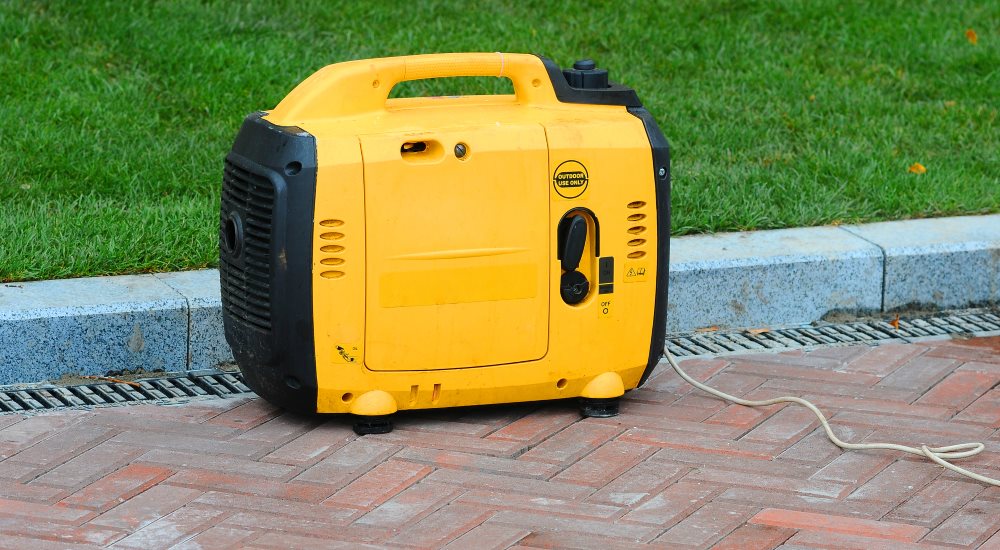

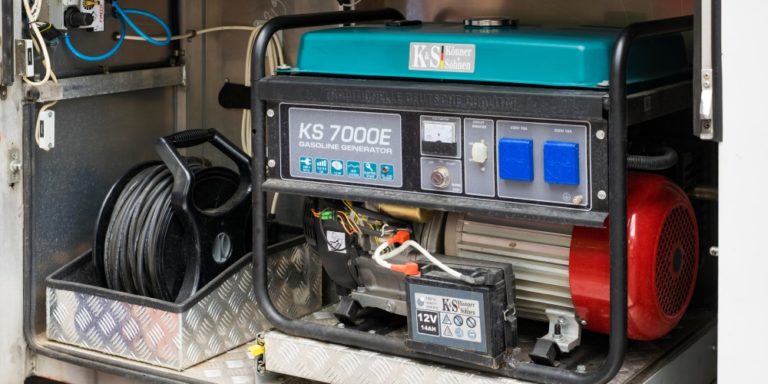
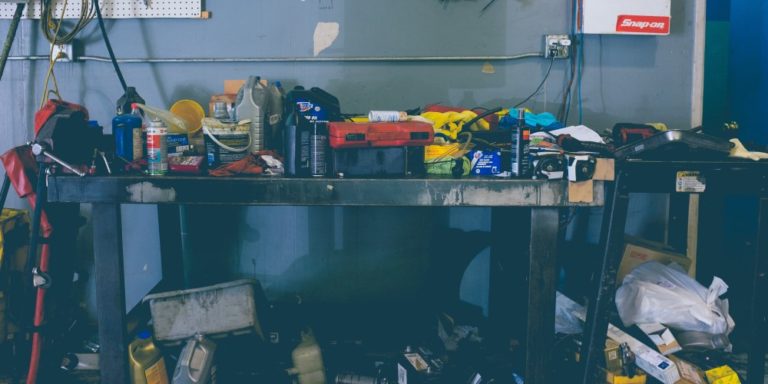
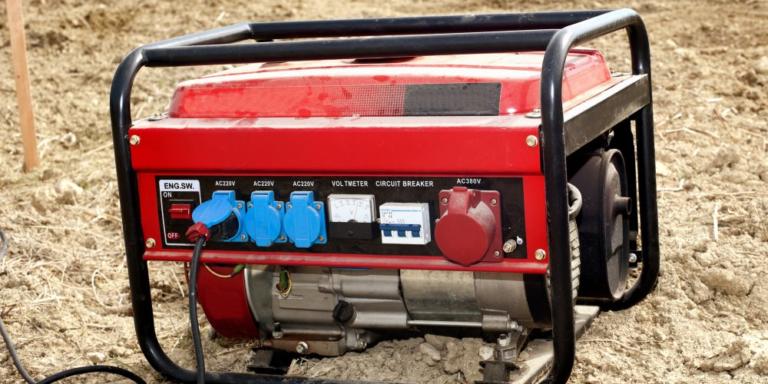
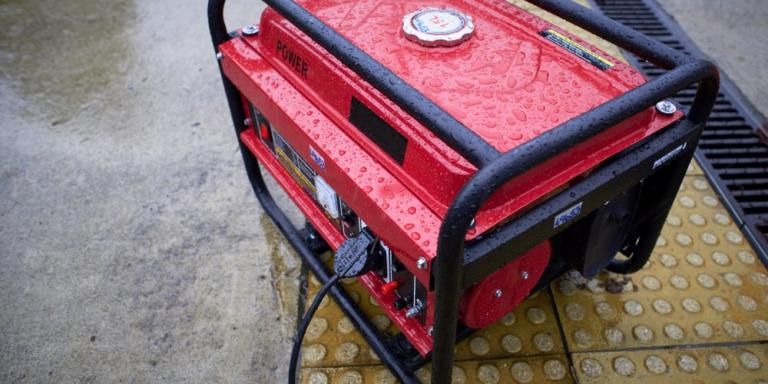
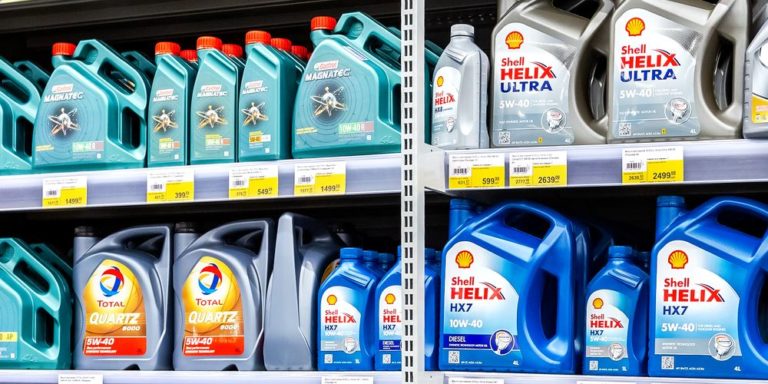
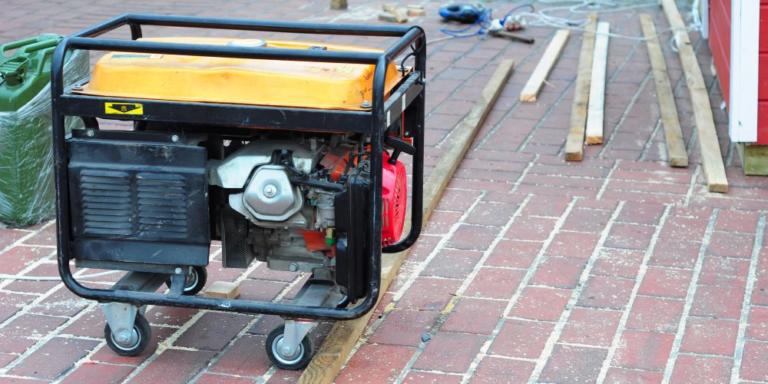
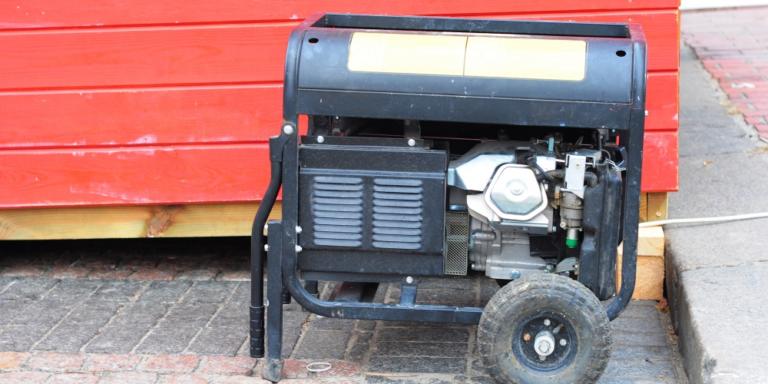
4 thoughts on “Best 2000 Watt Portable Generators”
There are several repeats of a typo regarding the Lifan generator reviewed here: The run time is 14 hours.
Thank you Gerhard for pointing out that typo. It obviously should be 14 hours instead of 4.
It´s great that you helped us to make this place a little better for others.
If you see any other mistake or a typo in our articles, feel free to correct us 😉
Matthew
You recommend the “beast” as the most powerful option on your list of best generators. But proceed to say there isn’t much info on it. So it’s obviously getting this rating because it has the most advertised power. but you literally know nothing about the product because of the lack of published information.
I don’t quite understand how it can make the list of the “best” generators If you don’t have any supporting information. Remember, you’re publishing a list of the best! not just simply staying this one has the most power.
I couldn’t even finish reading the list, because item number ones review is so flawed.
what about battery powered generaters? any thoughts?